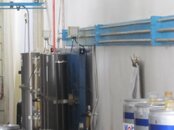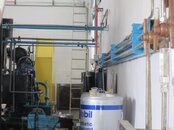- Messages
- 53,743
- Reaction score
- 7,941
- # of dives
- 500 - 999
Yeah, I saw some guys dive Nitrox to 100 feet thinking it was air. I started testing my tanks for both the next day.
Welcome to ScubaBoard, the world's largest scuba diving community. Registration is not required to read the forums, but we encourage you to join. Joining has its benefits and enables you to participate in the discussions.
Benefits of registering include
Damn! I often preface my remarks about inline monitors with " We hope that they are maintained and operated correctly, but I'll test my tanks anyway." You have seen their monitors. Do you know how close they are to the operator stations so they can be easily heard?I just got confirmation that the fills were being done by Meridiano and were EANx.
I will point out that nobody else got hurt, including open water divers using EANx who were going much deeper, and should have been affected.
They are going over everything in great detail and I'm sure they will find out exactly what happened.
One would think that the in-line CO Alarms would have sounded but there are other possible points of failure (IMO), especially doing partial pressure fills..
As many fills as Meridiano does, I don't understand why they don't bank at least 32%..
Damn! I often preface my remarks about inline monitors with " We hope that they are maintained and operated correctly, but I'll test my tanks anyway." You have seen their monitors. Do you know how close they are to the operator stations so they can be easily heard?


I am disappointed to hear that this incident may have involved Meridiano as they have been proactive and did install four Analox CO Clear monitors, but when I looked at these a few months ago I saw problems, at least with how they were installed at that time. From what I could determine the monitors were isolated in the compressor room well away from where the operators filled the tanks and it would be doubtful if they could hear the alarms if the window and doors were closed between the compressor room and fill whips out on the floor.
I'm still confused as to how Meridiano, if they are in fact the compressor station involved in this incident, could fill a tank with contaminated air ( or top off a nitrox tank when pp blending) since there are four (4) monitors on their system. Here is a photo of a pair of these monitors in action, but within the compressor room and not out on the floor where they should be.
View attachment 106019 View attachment 106020
I can verify that at least one was moved out to the EANx fill area, and possibly two, as of last week.

